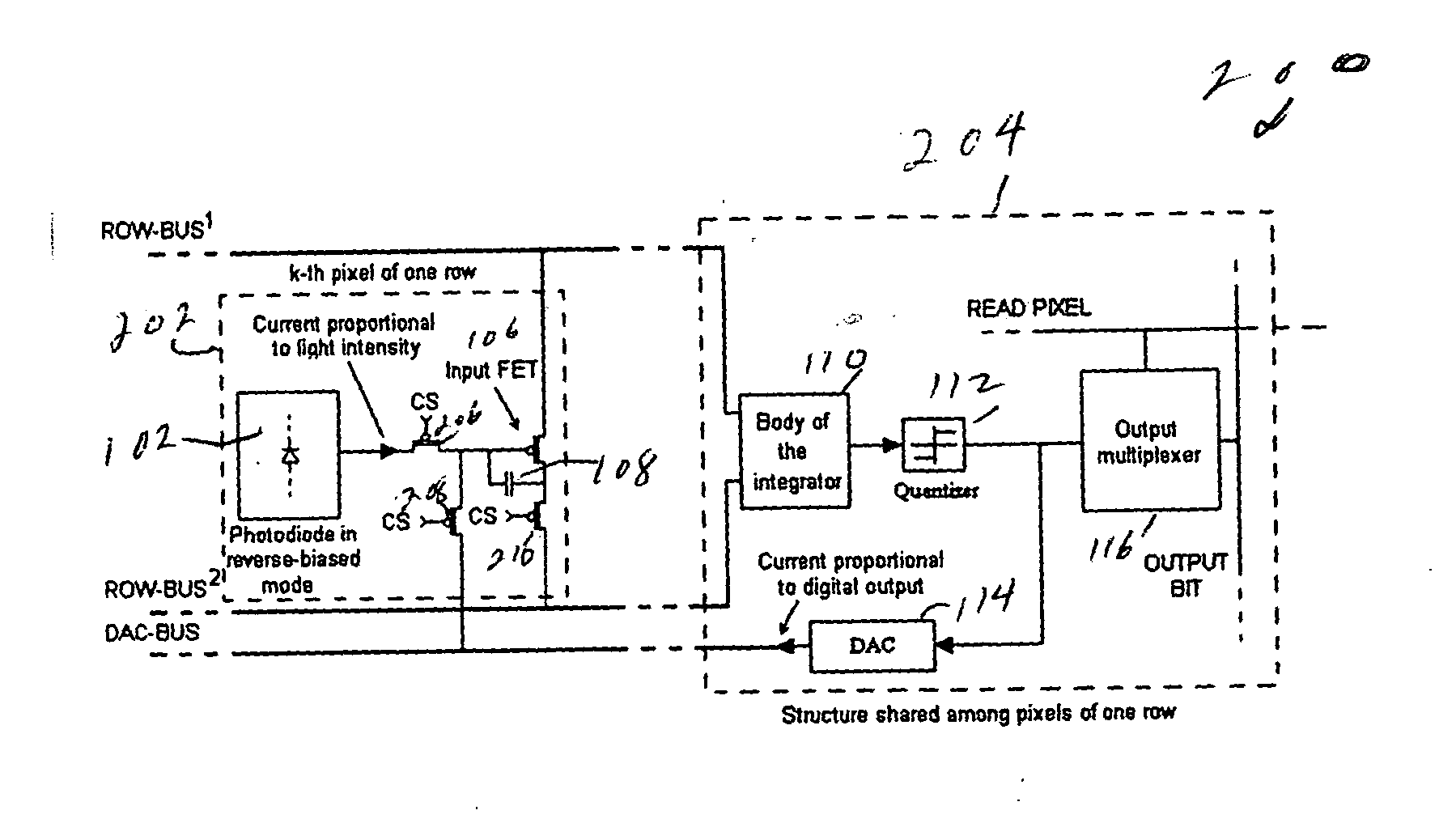Multiplexed-input-separated sigma-delta analog-to-digital converter design for pixel-level analog-to-digital conversion
a digital converter and multi-input technology, applied in the field of pixel-level analog-to-digital conversion, can solve the problems of high power consumption, small format and/or high price of ccd imagers, and fabrication technology that requires dedicated and costly manufacturing processes, etc., and achieves low power consumption, high linearity, and low cost
- Summary
- Abstract
- Description
- Claims
- Application Information
AI Technical Summary
Benefits of technology
Problems solved by technology
Method used
Image
Examples
Embodiment Construction
Preferred embodiments of the invention will be set forth in detail below with reference to the drawings, in which like reference numerals correspond to like elements throughout.
Each preferred embodiment uses one of two basic principles, one in which the intra-pixel integrator structure is realized with an external capacitance, and the other in which the integration effect of the photodiode in the photo-voltaic mode is used.
The first basic principle will be explained with reference to a block schematic of a known first-order pixel level ΣΔ ADC structure, where the intra-pixel integrator structure is realized with the external capacitance, as shown in FIG. 1. In the structure 100, a block 102 that represents a photosensitive element contains the photodiode and possibly a biasing circuit to keep the diode in the reverse-biased mode. While in reverse-bias mode, the voltage across the diode's terminals is kept constant, and the current is proportional to the light intensity. In conv...
PUM
 Login to View More
Login to View More Abstract
Description
Claims
Application Information
 Login to View More
Login to View More - R&D
- Intellectual Property
- Life Sciences
- Materials
- Tech Scout
- Unparalleled Data Quality
- Higher Quality Content
- 60% Fewer Hallucinations
Browse by: Latest US Patents, China's latest patents, Technical Efficacy Thesaurus, Application Domain, Technology Topic, Popular Technical Reports.
© 2025 PatSnap. All rights reserved.Legal|Privacy policy|Modern Slavery Act Transparency Statement|Sitemap|About US| Contact US: help@patsnap.com



